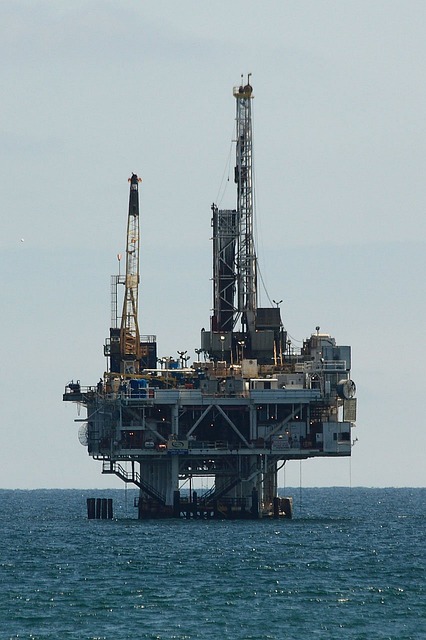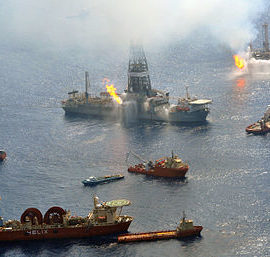
Since Deepwater Horizon drilling has gotten safer but some concerns still remain.
The safety of oil and gas drilling in the Gulf of Mexico has dramatically improved since the 2010 BP Deepwater Horizon disaster, but progress has been uneven and critical gaps must be addressed to prevent accidents that can threaten workers, the environment and public health, a report released Tuesday by the National Academy of Sciences said. “A visible, industry-wide, industry-led commitment to a culture that supports safety is lacking,” the report by the academy’s Gulf Research Program concluded. It added that while 80% or more of offshore work is done by contractors, the federal Bureau of Safety and Environmental Enforcement (BSEE) cannot legally require them to follow federal “safety and environmental management systems” (SEMS) rules because the agency’s authority is limited to the leaseholder, or operator, company overseeing a drilling operation. The report also said data collected by the industry-created Center for Offshore Safety and the BSEE-funded, but voluntary, SafeOCS Industry Safety Data program “do not yet provide sufficient trends with which to gauge industry progress.” “There’s a lot that’s been done on all fronts that looks at systemic risk, or just risk in general, which are great improvements,” said Richard Sears, chair of the committee that authored the report and an adjunct professor of energy science and engineering at Stanford University whose background includes 33 years with Royal Dutch Shell. And while the report clearly focuses on significant additional safety needs, he said, the improvements by both industry and its federal regulators should not be overlooked.
nola.com
There were key reforms proposed.
Key reforms instituted since Deepwater Horizon include: Breaking out the BSEE from the Department of Interior’s original Minerals Management Service as a separate agency “with a singular focus on safety, and mandated safety and environmental management systems.” The remainder of the original agency’s duties in overseeing oil and gas leasing now are handled by the separate Bureau of Ocean Energy Management, Heightened industry standards and regulatory requirements for well control and production safety systems, Improved industry data collection and the sharing of some near-miss and other safety indicators and Creation and funding by industry of the Center for Offshore Safety. “Industry has also invested billions of dollars on well-capping capabilities that did not previously exist and updated more than 250 safety-related standards,” the report said. But the report said many safety gaps remain, including the failure of Congress to implement post-Deepwater Horizon recommendations to use a share of royalties and fees imposed on the offshore oil and gas industry to pay for safety and environmental regulators.
Split agency requirements do not help.
A similar legal issue is the present federal requirement that BESE audit operators/leaseholders safety and environmental management systems on a regular basis, Sears said. BESE is not allowed to require similar audits of contractors’ safety systems. “It’s up to the operators to make sure that the contractors have an appropriate safety and environmental management system,” he said. “Is that a fatal flaw? Not necessarily, but it makes things more complicated. Giving BESE the authority to actually directly audit the contractors requires Congress to step in.” The report focuses on the term “systemic risk,” which it defines as risks associated with the components of the system, the system itself, and how humans interact with the system, where a failure in any part could result in a failure of the system as a whole.
Deepwater Horizon was a case of systemic risk.
Systemic risk was identified as the basic cause of the Deepwater Horizon disaster, where workers attempted to shut down exploratory drilling operations at BP’s Macondo well, 33 miles southeast of New Orleans, in 4,992 feet of water – about a mile below the surface – to switch out rigs in anticipation of drilling a production well. The work was under BP’s oversight, but was done by contractor Transocean, owner of the Deepwater Horizon rig, and other contractors. While attempting to shut down the well by plugging it with cement, natural gas leaked out and reached the rig, a mile above, where it exploded, killing 11 workers and severely injuring 17 others. A huge blowout preventer structure at the wellhole on the ocean floor did not work to shut off the flow of gas, and a riser pipe carrying the gas to the surface failed to break away, which might have reduced the damage. The well continued to flow for 86 days, releasing 5 million barrels of oil, with only a small amount captured before entering the water. “The subsequent investigations of the blowout and explosion pointed to significant management and organizational failures by BP and its contractors, as well as insufficient regulation and regulatory oversight, as the primary contributing causes of the disaster,” the report said. “The actions taken during temporary abandonment displayed an inadequate system safety approach by BP and Transocean. The multiple flawed decisions that were made also displayed a lack of a strong culture of safety on the rig.” Sears said much of the continued concern involves how well industry understands its own corporate culture and the role of proper safety within it.
The industry as a whole does not understant what a stop work rule is needed.
During his time serving as a senior member of the National Oil Spill Commission’s investigation of the Deepwater Horizon accident, the failure to understand the limitations of a safety culture were driven home by a discussion of what’s called a “stop work” rule with a contract worker on the Deepwater Horizon. The rule is supposed to allow any worker to demand work be stopped on a rig until an assessment is made over whether proper safety precautions are being followed. In this case, the worker told Sears he was approached by another worker informing him that the schedule for what they were working on just before the explosion had been changed. “And he told me afterwards, ‘You know, I thought that was really odd. I’d never actually seen anyone do things in that order before, but I figured, they knew what they were doing more than I did,’” Sears said. “So here’s an individual with a lot of experience offshore, and something wasn’t quite right, but he basically defers to others.” “And that’s not quite the right culture,” he said. “The right culture is one where he might actually raise a question, ‘Are you sure? I’ve never seen it actually happen this way and I’m concerned that it’s potentially dangerous.’ The question today is where is that within the industry? It’s not clear that everybody in the industry is properly empowering, incentivizing, motivating employees to step up and act in the right way when they see something they don’t agree with.”
These are suggestions and not recommendations as that was not the purpose of the paper.
Sears said the report provides a list of conclusions about issues involving offshore safety, but stops short of making specific recommendations. That’s because the Gulf Research Program requested the report be written as a guide to future research into safety issues. The Gulf Research Program is funded by $500 million paid by BP and its drilling partners as part of a settlement of criminal charges in the aftermath of the Deepwater Horizon accident, with the money to be available over a 30-year period for research focusing on Gulf offshore energy safety; environmental protection and stewardship; and public health and resilience for Gulf Coast residents. The panel of experts who wrote the report attempted to gather information from both industry sources and regulators, but were not always successful. “Individual experts from the offshore industry gave presentations on improved safety practices and technologies. Representatives of major U.S. associations that often speak on behalf of offshore oil and gas exploration and production companies declined invitations to meet with the committee,” the report said.
Climate Change is driving some of the safety rules.
The report also deals with the safety concerns in the Gulf that already are popping up because of the effects of climate change, Sears said. Part of the concern is the potential pressure oil and gas exploration and production will face, some of it economic, as efforts increase to reduce the production of such carbon-emitting fuels. But it also includes potential interactions in the Gulf between traditional oil and gas operations, the development of wind turbines operated by utility companies with no offshore experience, and the potential drilling operations of businesses that want to drill wells to inject carbon dioxide deep under the Gulf.
The only good that came out of Deepwater Horizon was the money for protecting the coast.


